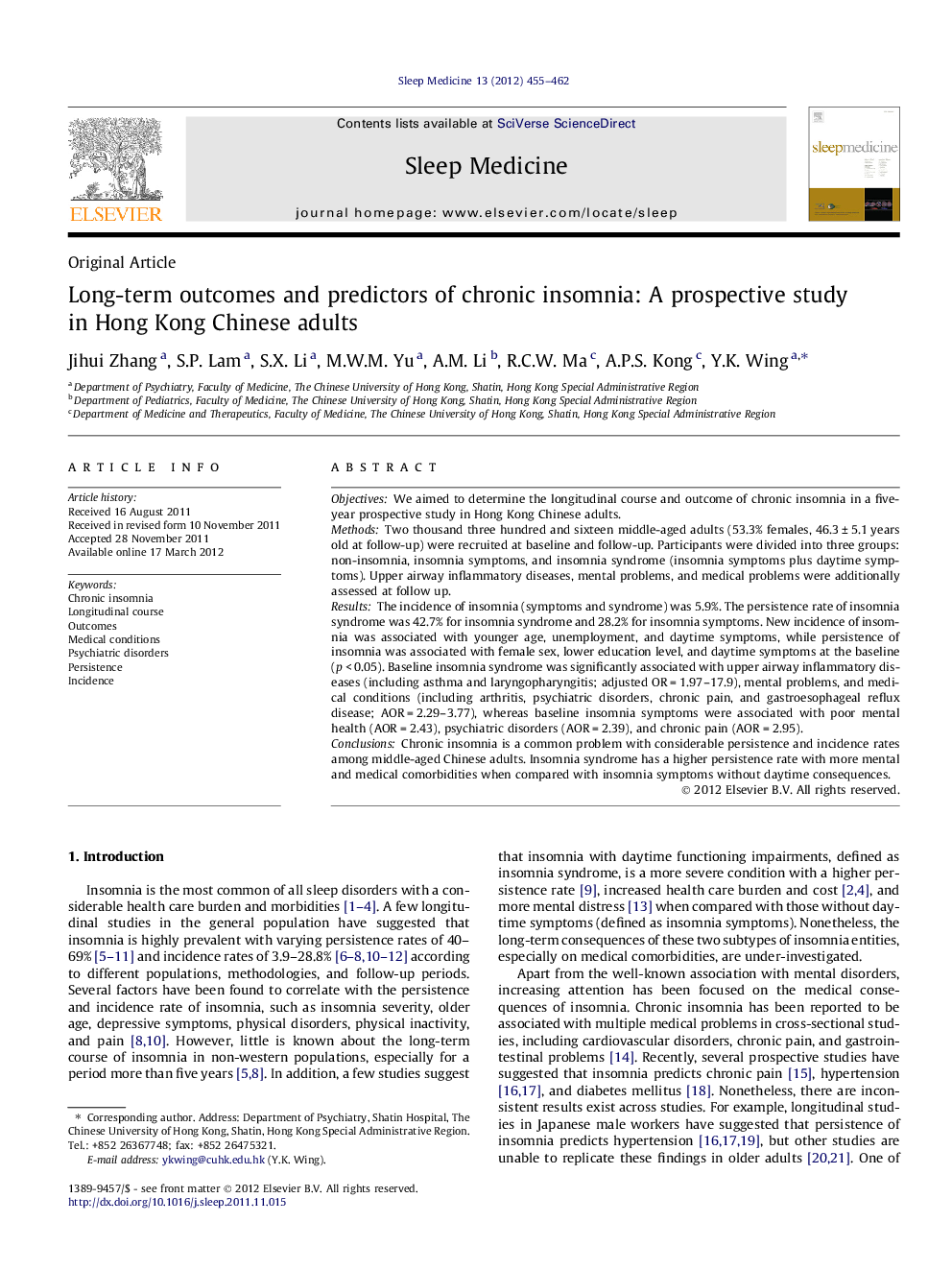| Article ID | Journal | Published Year | Pages | File Type |
|---|---|---|---|---|
| 3176419 | Sleep Medicine | 2012 | 8 Pages |
ObjectivesWe aimed to determine the longitudinal course and outcome of chronic insomnia in a five-year prospective study in Hong Kong Chinese adults.MethodsTwo thousand three hundred and sixteen middle-aged adults (53.3% females, 46.3 ± 5.1 years old at follow-up) were recruited at baseline and follow-up. Participants were divided into three groups: non-insomnia, insomnia symptoms, and insomnia syndrome (insomnia symptoms plus daytime symptoms). Upper airway inflammatory diseases, mental problems, and medical problems were additionally assessed at follow up.ResultsThe incidence of insomnia (symptoms and syndrome) was 5.9%. The persistence rate of insomnia syndrome was 42.7% for insomnia syndrome and 28.2% for insomnia symptoms. New incidence of insomnia was associated with younger age, unemployment, and daytime symptoms, while persistence of insomnia was associated with female sex, lower education level, and daytime symptoms at the baseline (p < 0.05). Baseline insomnia syndrome was significantly associated with upper airway inflammatory diseases (including asthma and laryngopharyngitis; adjusted OR = 1.97–17.9), mental problems, and medical conditions (including arthritis, psychiatric disorders, chronic pain, and gastroesophageal reflux disease; AOR = 2.29–3.77), whereas baseline insomnia symptoms were associated with poor mental health (AOR = 2.43), psychiatric disorders (AOR = 2.39), and chronic pain (AOR = 2.95).ConclusionsChronic insomnia is a common problem with considerable persistence and incidence rates among middle-aged Chinese adults. Insomnia syndrome has a higher persistence rate with more mental and medical comorbidities when compared with insomnia symptoms without daytime consequences.
